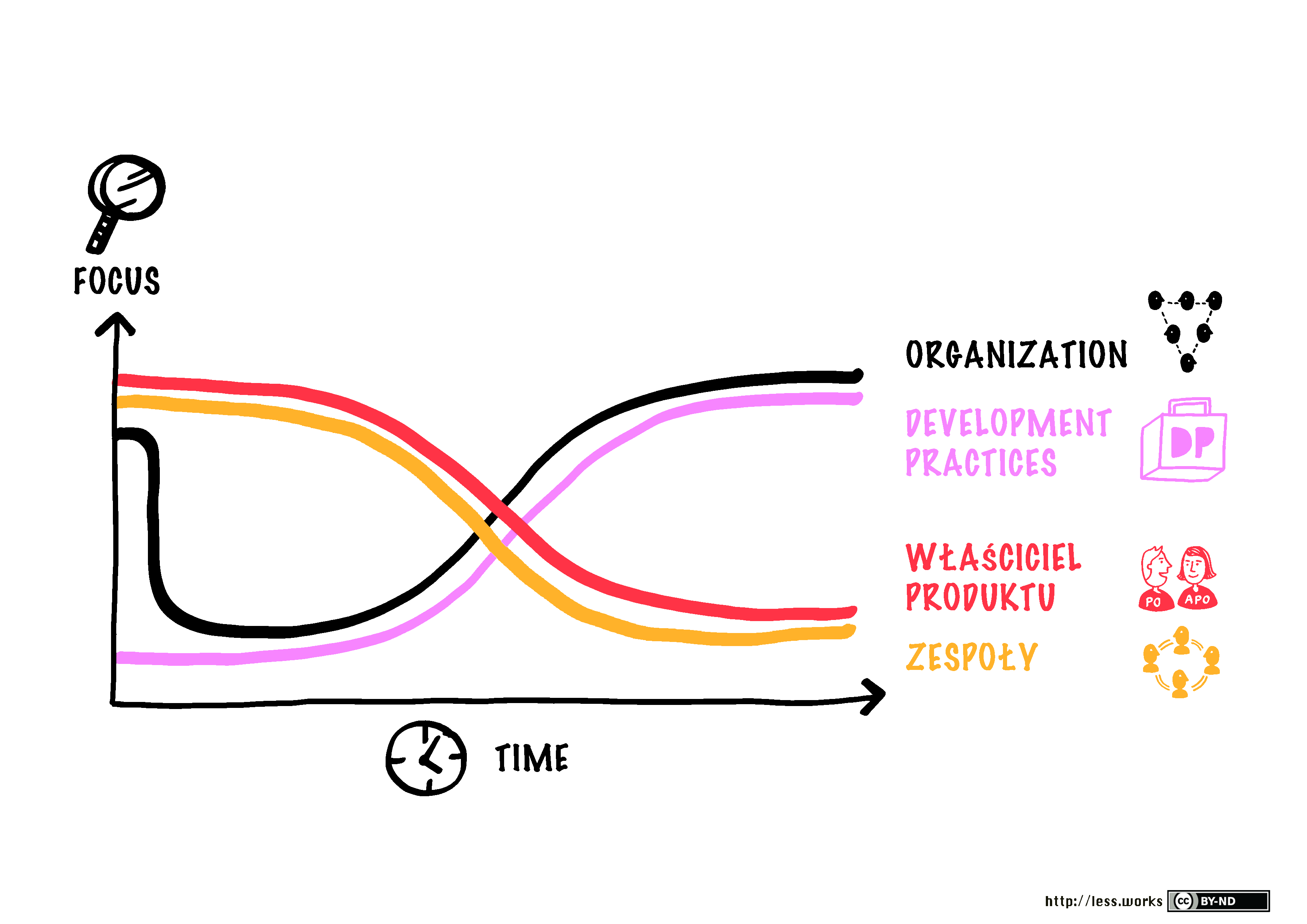Scrum Master
The Scrum Master teaches Scrum to the organization and coaches them in their never-ending adoption. She has mastered Scrum and uses this deep Scrum understanding to guide everybody to discover how they can best contribute to creating the most valuable product.
The Scrum Master role is often misunderstood and performed poorly because people attempt to map this new role to an existing one. It doesn’t map. It is not the master of the team, nor is it an ‘agile’ project manager or a team lead.
The Scrum Master role is one of two “meta-feedback-loops” in Scrum. It is a supporting role helping the organization to reflect and improve towards their perfection vision. She creates the environment for people to succeed.
Scrum Master focus
The Scrum Master Checklist by Michael James is an excellent Scrum Master tool. It identifies four areas of focus for a Scrum Master.
- team
- Product Owner
- organization
- development practices
These focus areas also expose a common Scrum Master problem: too much focus on the team.
The four focus areas help us in understanding the Scrum Master role in LeSS, especially when we plot the Scrum Master focus over time:
Let’s examine this graph a bit and the reasoning behind this.
Focus on Team
The initial focus of a Scrum Master towards the team(s) is high, but it should decline over time. When the teams are formed, the Scrum Master spends a lot of effort on educating and coaching the team(s) in self-management and taking on a shared responsibility. Over time, the team(s) rely less on their Scrum Master as they take on all responsibility by themselves.
The maturing of teams is one reason many Scrum adoptions opt for part-time Scrum Masters. But in LeSS, the Scrum Master isn’t a part-time role and when his Team has matured then the Scrum Master may take up another team—up to three in fact. Being a Scrum Master for multiple teams automatically shifts focus to the bigger picture of the organization and the Product Owner.
Focus on the Product Owner
Initially, the Scrum Master focus towards the Product Owner is coaching him in the role. This includes education on how she can best use the Product Backlog, facilitation of his interaction with the team(s), and being there to help him reflect.
Don’t focus only on the Product Owner-Teams relationship. The other Product Owner relationships also need the support of a Scrum Master. Let’s explore these:
The Scrum Master helps the Product Owner getting closer to real users and customers. The Product Owner needs feedback from them to validate the direction of the product. It also happens that the Product Owner is the ‘wrong’ Product Owner; then the Scrum Master should help the organization to find the ‘right’ Product Owner who is close to users and customers.
The Scrum Master helps to build up a relationship of trust, equality, and cooperation. This is hard work as historically this relationship is fraught with opacity, blame, and distrust.
The focus of the Scrum Master towards the Product Owner should decrease over time as the Product Owner gets more comfortable with his role within the LeSS organization.
Focus on the Organization
LeSS adoption require an initial structural change, thus initial organizational focus is high. The focus on improving the organization drops once the basic structure is in place. Then it’s the teams’ turn to produce results. That’s the best way to change an organization: by producing results. Why would the organization trust you and your teams if you didn’t show them results and benefit?
Producing working software produces credibility.
Focus on the Development Practices
As a Scrum Master, you ought to be aware what the top-notch modern development practices are and help introduce these to the team. LeSS adoptions often involve large codebases with lots of archaic and messy legacy code; applying modern practices on them is challenging. The focus on development practices stays high as it will only become harder and harder to improve the teams even further.
Don’t Coordinate Between Teams
Traditional organizations have a coordinator (project manager) who coordinates work between teams. In LeSS, the multi-team coordination is the responsibility of the teams.
Many teams are so used to having a coordinator that they will look for the Scrum Master to be this. Don’t do it. Help your teams this way:
- remind them that it is their responsibility
- introduce teams to each other
- help them agree on a coordination mechanism, e.g., a meeting
But don’t do the coordination yourself.
Scrum Master Reading List
We’d expect a Scrum Master to be an expert in Scrum and LeSS. But did she master Scrum? Mastering suggests that there is not much more to learn. But we have been involved with LeSS adoption for a long time and we still learn more about Scrum and LeSS. Scrum Masters need to continuously improve themselves. Reading is one way and we recommend reading:
- Leading Teams —Richard Hackman
Hackman’s Leading Teams summarizes 30+ years of team research and is perhaps the best book on building self-managing teams. - The Skilled Facilitator—Roger Schwartz
There is a lot to facilitation and this book is an excellent text on improving your facilitation skills. - Co-active Coaching—Kimsey-House et. al.
There is a lot to be learned about coaching and this book is one of the better starting points. - The Five Dysfunctions of a Team—Patrick Lencioni
Wonderful little fable about how teams work (or don’t). - Humble Inquiry—Edgar Schein
Schein has 50 years experience in organization development and coaching organizations. One of his conclusion from his experience: we need less telling and more asking.

